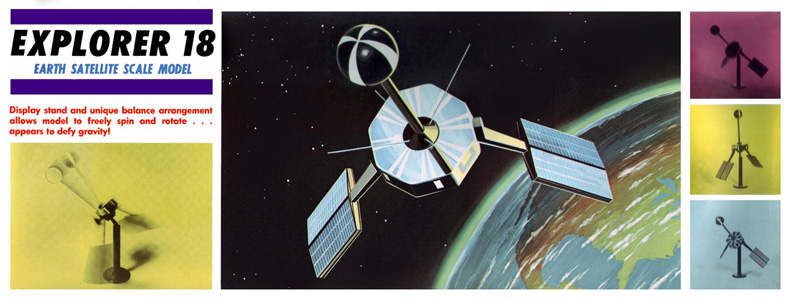Explorer 18 Satellite (1963)
About the Design
Launched from Cape Kennedy, Florida, on December 26, 1963, the Explorer 18 satellite was designed to study radiation between the earth and the moon, magnetic fields and earth-sun relationships. Standing seven feet high and 14 feet wide, it had a highly elliptical orbit that ranged from an apogee of 122,800 miles to a perigee of just 120 miles.
|
About the Kit
This was an unusual kit for several reasons. It was one of the few styrene kits ever produced of unmanned satellites. (The ITC Explorer 1 and Hawk Vanguard 1 were others.) It was also HIGHLY inaccurate, the actual Explorer 18 have four arms and solar panels, not the mere two included in the model. And they were deployed at a very different angle.
This Hawk model was designed to balance on a narrow pedestal, metal plates glued to the underside of each solar panel giving it an unusually low center of gravity that resulted in uncanny stability. Finally, it came with four "antenna" rods, the tips of which needed to be heated via open flame so they could be literally fused to the satellite's main body. This model was built from an original issue. |


